Solutions4Excellence
These field-proven approaches develop your leaders, your teams and your organization.
Each approach is designed for sustainable growth, maximum impact and measurable success
It's about achieving a new level of "performance". Every approach is part of our SPS Framework - our common SPARRING-AREA.
The approaches:
- Innovation4Success
- MOVE4Success
- Fit4Onboarding
- Fit4StreamlineSales
- Fit4ServicesExcellence
- Fit4MoreEfficiency
- Fit4ReinventingOrganizations
- Sparring4Leaders
- Fit4HighPerformanceOperatingEnvironments (HiPOE)
- Fit4PerformanceUnderPressure
- Fit4BuildingBoardroomRelationships (BBR)
- Fit4ReinventingLeadership
- Fit4LeadingDigitalEnvironments

Each approach describes our WHY - HOW - WHAT to do it. A detailed concept we will design together with you. Because it is all about connecting you with your goals. But for that we need to know and understand them first, before we want to be understood. Therefore, it is also possible that we define and implement a completely new approach together with you.
WHY?
HOW?
Do you really know your customer, his challenges and the resulting consequences -the issue with the issue? How can your customer tell that you really know them and their industry and the new challenges that come with it? Do you know all the decision makers and their goals? Do you succeed in building a good innovative story to inspire your customer to choose you?
WHAT?
We guide your sales team through a new and innovative sales process that enhances customer experience and loyalty and brings you new sales. Step by step we go through 7 chapters together with many practical exercises your sales people will learn how to grow their accounts.
WHY?
It is important to understand how to focus on the entire HR LifeCycle in order to be able to act holistically in the SPS framework.
The urge and the will to be able to decide more, to want to and to be allowed to is
very strong. New open SPACES are wanted.
That makes the real difference for talents today, so that they consciously decide for a
company?
Whoever succeeds in the future in finding the best talents and, above all, in retaining and further more to develop them - in other words, to lead them - will have the best chance of growing successfully
in these rapidly changing times.
HOW?
Human Resources vs. Human Relations,
away from the rigidity of processes & systems towards flexibilization, dynamization and
new trust constructs and cultures.
WHAT?
Developing a new perception and positioning under the heading "HR Performance 3.0".
Position HR as an agile driver, so that the right talents come on board, develop themselves and the company in the long term. Sustainability is achieved when the executives of the company are already actively and stimulatingly supporting their talents in their development.
WHY?
Old Normal - New Normal - Next Normal: Now it is important to gain new and trend-setting insights from what we have learned.
HOW?
How do we work together? How do we position ourselves? Above all: How do we interact with each other and, what does this mean for the areas of management and leadership? These are exactly the central questions that need to be asked AND answered NOW.
WHAT?
We provide you, your employees and your executives with the necessary competencies
for your NEW NORMAL.
We provide the know-how for the leadership of employees in your NEW NORMAL.
We approach the topic holistically.
We focus on method & organization as well as behavior & attitude.
We accompany you in your M.O.V.E. towards the NEW NORMAL.
WHY?
Because important decisions of strategic scope are made by decision makers (board members, managing directors, country managers, global heads, etc.). And for this reason it makes sense to speak WITH decision makers at eye level.
HOW?
Your sales team has the unique opportunity to get in touch with REAL decision makers from different industries. This unique training situation is definitely more real AND more challenging for your team.
WHAT?
Your sales team SPARES with real leaders and decision makers from different industries in the Selling Cycle.
Through the initiation of contact, the elevator pitch, inquiring about and understanding the decision-maker's goals, the assessment with the buying center, the solution presentation, all the way to the successful completion of the project.
WHY?
Rigid structures in thinking and organization must be broken down to become fit for the future.
Many organizations are neither competitive nor innovative enough for the (market) changes coming their way.
Accordingly, one in three executives in the Western world doubts their role and the meaning behind it. This is less due to the individual than to the frustrating conditions of leadership work.
HOW?
We lead people in organizations through transformation processes: Radical - Progressive - Holistic. In doing so, we shift the attention from problems in management to new possibilities of cooperation in the organization. In particular, we support managers to get to the point where they do not anymore manage people - but relationships. We want to understand first - before we want to be understood.
WHAT?
You will find new answers: why and how leadership and collaboration are transforming and what this means for you personally, your team and your organization. During this process, you will develop action strategies for typical challenges. This will move you from thinking to doing - supported by individual SPARRING you learn to understand your own patterns and potentials.
WHY?
The world is changing, the future has begun.
Change has a massive impact on society and organizations.
What matters now is that we recognize and use our personal strengths to radically reinvent ourselves. This is how we can all become digitization winners.
HOW?
Joint development of a guide line on how to make the best out of the change constructively for yourself and your company.
WHAT?
Questioning and challenging all areas of the entire organization. Full focus on customer behavior, products, market access as well as structures and processes before an existing or newly positioned competitor attacks.
WHY?
Because life and work in organizations, as well as their performance contributions to society, must be radically changed for the better.
What matters now is that we recognize and use our personal strengths to radically reinvent ourselves. This is how we can all become digitization winners.
Companies operate in a holistic, self-organizing and meaningful way. In doing so, they use both structures and practices according to novel, evolutionary-integral principles in order to grow successfully on the market in the long term.
HOW?
The structures, practices and cultures of evolutionary organizations are based on 3 essential pillars:
Self-leadership (structure and processes), The search for wholeness (general practices and HR processes), and Evolutionary meaning (culture and values).
WHAT?
3 Self-leadership practices
4 Holistic practices
2 Practices on evolutionary sense
WHY?
Because the challenges have not become less and easier and many managers are often lone wolves. That's why we need exchange, reflection and SPARRING.
Away from tunnel vision to focus on the essentials.
HOW?
No theory, no assumptions, no preconceived content.
Everything is up-to-the-minute and relevant to your business and leadership team, because it takes REAL solutions to REAL occasions and triggers.
WHAT?
It starts with a survey of your company's leaders to capture, evaluate and identify the most important issues.
Then there are several SPARRINGS in intensive coaching sessions on the day's current issues for your leaders.
In addition, other issues are identified that are resolved through change projects.
WHY?
It is always a matter of enabling internal and external customers to create an environment in which top performance can be achieved.
It is certainly possible to achieve this by optimizing processes and interfaces and digitizing IT systems.
However, this can be achieved much more effectively by sharpening a common value system and developing behaviors and attitudes that contribute positively to the value account.
What can it mean for YOUR business?
HOW?
What values have you defined to enable a High Performance Operating Environment for internal and external customers?
How well are these actually lived and where are their limits?
How did you differentiate between behaviors and attitudinal patterns that either positively or negatively contribute to the values account?
How clear are your leaders in this?
WHAT?
Your executive and management team develops a value system that is sharpened and updated to HiPOE.
Then you and your leaders will learn how to effectively lead your teams through the same process in a facilitated workshop before we focus together on integrating their value system for the entire organization.
Motto hierbei: See one, do one, teach one.
WHY?
The challenges are not getting any less. Change and transformation are taking place ever more rapidly and unpredictably. Pressure is constantly increasing while performance expectations remain high.
Those who stay focused and are better able to deal with distractions have a clear advantage.
HOW?
How do you recognize emotional distractions and what is your behavior pattern? What are your triggers and what sets them off? What do you need to stay focused? How can you support your team? What success factors are critical to perform at your best under pressure?
WHAT?
By analyzing the main tasks and identifying the distractions, you will develop a method for you and your team to focus on the essentials in dynamic times.
WHY?
For new employees - regardless of whether they are newly hired or brought on board through a merger, acquisition, etc. - it is extremely important to be integrated into the company and especially into the corporate culture as quickly as possible.
There is a great risk that a Cultural Misfit will cause expectations on both sides to be unfulfilled.
Whoever succeeds in the future in finding the best talents and, above all, in retaining and further more to develop them - in other words, to lead them - will have the best chance of growing successfully
in these rapidly changing times.
HOW?
What does your organization stand for? What does your company want to achieve?
And most importantly, how do you want your new employees to think about you and your company?
WHAT?
Together with you, we develop the central answers to the above-mentioned question. Together with you, we develop an effective concept for sustainable inspirational onboarding.
Here we make a very clear distinction between onboarding a new employee and onboarding completely new company units.
WHY?
To successfully and sustainably improve coverage, it is crucial to understand the customer before you want to be understood by him. Buying is always a purchase decision by the customer based on his individual motives. It is crucial to understand what the customer wants in order to give him what he needs.
HOW?
Do you really know your customer? Have you identified all the decision makers for your deal and built a relationship with all of them? Do you know where your customer is in the selling cycle at all times and do you have an appropriate strategy to guide them towards a successful close?
WHAT?
You will learn tools and strategies that will help you and your sales team to identify critical gaps. This way, forecasts become more accurate and coverage is massively increased.
WHY?
From the customer's point of view, there are increasingly similar companies in these global and digitalized markets, with similar products at similar prices. The question is, what does the customer get out of choosing you? What is your extra mile?
HOW?
How do you differentiate yourself from your competition in terms of service? How well are doing In inspiring your customers? How important is service excellence? How do you recognize that your customer is enthusiastic about you and your products and services? and services? What role do recommendations play in your business model?
WHAT?
You will learn tools and strategies for turning your customers into enthusiastic referrers through excellent and perfectly coordinated services to turn them into enthusiastic referrers.
WHY?
HOW?
Do you really know your customer, his challenges and the resulting consequences -the issue with the issue? How can your customer tell that you really know them and their industry and the new challenges that come with it? Do you know all the decision makers and their goals? Do you succeed in building a good innovative story to inspire your customer to choose you?
WHAT?
We guide your sales team through a new and innovative sales process that enhances customer experience and loyalty and brings you new sales. Step by step we go through 7 chapters together with many practical exercises your sales people will learn how to grow their accounts.
WHY?
It is important to understand how to focus on the entire HR LifeCycle in order to be able to act holistically in the SPS framework. The urge and the will to be able to decide more, to want to and to be allowed to is very strong. New open SPACES are wanted. That makes the real difference for talents today, so that they consciously decide for a company? Whoever succeeds in the future in finding the best talents and, above all, in retaining and further more to develop them - in other words, to lead them - will have the best chance of growing successfully in these rapidly changing times.
HOW?
Human Ressources vs. Human Relations,
Away from the rigidity of processes & systems towards flexibilization, dynamization and
new trust constructs and cultures,
WHAT?
Developing a new perception and positioning under the heading "HR Performance 3.0".
Position HR as an agile driver, so that the right talents come on board, develop themselves and the company in the long term. Sustainability is achieved when the executives of the company are already actively and stimulatingly supporting their talents in their development.
WHY?
Old Normal - New Normal - Next Normal: Now it is important to gain new and trend-setting insights from what we have learned.
HOW?
How do we work together? How do we position ourselves? Above all: How do we interact with each other and, what does this mean for the areas of management and leadership? These are exactly the central questions that need to be asked AND answered NOW.
WHAT?
We provide you, your employees and your executives with the necessary competencies for your NEW NORMAL.
We provide the know-how for the leadership of employees in your NEW NORMAL.
We approach the topic holistically.
We focus on method & organization as well as behavior & attitude.
We accompany you in your M.O.V.E. towards the NEW NORMAL.
WHY?
Because important decisions of strategic scope are made by decision-makers (board members, managing directors, country managers, global heads, etc.). And for this reason it makes sense to talk WITH decision makers at eye level.
HOW?
Your sales team has the unique opportunity to get in touch with REAL decision makers from different industries. This unique training situation is definitely more real AND more challenging for your team.
WHAT?
Your sales team SPARES with real leaders and decisions from different industries in the selling cycle.
Through contact initiation, the elevator pitch, asking for and understanding the decision maker's goals, the the assessment with the buying center, the solution presentation up to the successful completion of the project.
WHY?
Rigid structures in the thinking and in the organization itself must be broken down in order to
fibecome fit for the future.
Many organizations are neither competitive nor innovative enough for the (market-)
changes that are coming their way.
One out of three executives in the Western world doubts his role
and the meaning behind it. This is less due to the individual persons than to the
frustrating conditions of leadership work.
HOW?
We lead people in organizations through transformation processes: Radical - Progressive - Holistic. In doing so, we shift the attention from problems in management to new possibilities of cooperation in the organization. In particular, we support managers to get to the point where they do not anymore manage people - but relationships. We want to understand first - before we want to be understood.
WHAT?
You will find new answers: why and how leadership and collaboration are transforming and what this means for you personally, your team and your organization. During this process, you will develop action strategies for typical challenges. This will move you from thinking to doing - supported by individual SPARRING you learn to understand your own patterns and potentials.
WHY?
The world is changing, the future has begun. Changes have a massive impact on society and organizations. It is now a matter of recognizing and using our personal strengths to to radically reinvent ourselves. This is how we can all become digitalization winners.
HOW?
Joint development of a guide line on how to make the best out of the change constructively for yourself and your company.
WHAT?
Questioning and challenging all areas of the entire organization. Full focus on customer behavior, products, market access as well as structures and processes before an existing or newly positioned competitor attacks.
WHY?
Because living and working in organizations, as well as their
contributions to society, must be radically changed
for the better.
In doing so, companies operate holistically, self-organizing and
and meaningfully. In doing so, they use both structures and practices through the integration of
new, evolutionary-integral principles, in order to grow successfully in the marketplace
on the long-term.
HOW?
The structures, practices and cultures of evolutionary organizations are based on on 3 essential pillars: Self-leadership (structure and processes) , The search for wholeness. (general practices and HR processes) and evolutionary purpose (culture and values).
WHAT?
3 practices for self-leadership 4 practices for wholeness 2 practices on evolutionary purpose
WHY?
Because the challenges have not become less and easier and many leaders are often lone wolves. That's why we need exchange, reflection and SPARRING . Away from tunnel vision to focus on the essentials.
HOW?
No theory, no assumptions, no prefabricated content. Everything is up to date and relevant for your company and your management team, because it needs REAL solutions for REAL occasions and triggers.
WHAT?
It starts with a survey of your company's leaders , to capture, evaluate, and identify the most important issues. Then there are several SPARRINGS in intensive coaching sessions on the day's current topics of your executives. In addition, other issues are identified to be resolved through change projects.
WHY?
It is always a matter of enabling internal and external customers to create an environment in which the
maximum performance can be achieved.
It is certainly possible to create this by optimizing processes and interfaces and
digitizing IT systems.
However, this can be achieved much more effectively through the sharpening of a common
system of values and the development of behaviors and attitudes that contribute
positively to the value account
What can this mean for YOUR company ?
HOW?
What values have you defined to enable internal and external customers to enjoy a High Performance operating environment? How well are these actually brought to life and exemplified and where are their limits? How do you differentiate between behaviors and attitude patterns that are either positively or negatively contribute to the value account? How clear are your leaders in this?
WHAT?
Your executive and management team develops an updated value system that is focused on HiPOE. Subsequently, you and your executives will learn how to lead your teams effectively through the same process in a moderated workshop, before we jointly focus on the integration of your value system for the entire organization. Motto: See one, do one, teach one.
WHY?
The challenges are not getting any less. Change and transformation are happening faster and more finden immer
unpredictably. Pressure is constantly increasing while performance
expectations remain high.
Those who stay focused and are better able to deal with distractions have a clear advantage.
HOW?
How do you recognize emotional distractions and what is your behavior pattern? What are your triggers and what sets them off? What do you need to stay focused? How can you support your team? What success factors are critical to perform at your best under pressure?
WHAT?
By analyzing the main tasks and identifying the distractions, you will develop a method for you and your team to focus on the essentials in dynamic times.
WHY?
For new employees - regardless of whether they are newly hired or
brought on board through a merger, acquisition, etc.
- it is extremely important to be integrated into the company and especially into the corporate culture as
quickly as possible.
There is a great risk that a cultural misfit will result in expectations not being met on
both sides.
Whoever manages to find the best talents in the future and, above all, to retain and develop them - in other words, to
lead them - has the best chance of growing successfully in these
rapidly changing times.
HOW?
What does your organization stand for? What does your company want to achieve? And most importantly, how do you want your new employees to think about you and your company? What are the most important insights your new employees should take away from a professional onboarding?
WHAT?
We work with you to find the key answers to the above questions. Together with you, we develop an effective concept for a sustainable inspiring onboarding. Here, we make a very clear distinction between onboarding a new employee and onboarding completely new company units.
WHY?
To successfully and sustainably improve coverage, it is crucial to understand the customer before you want to be
understood by him. Selling is always a purchase decision by your customers based on their individual motives. It is
eine Kaufentscheidung des Kunden auf Basis seiner individuellen Motive. Es ist
critical to understand what the customer wants in order to give them
what they need.
HOW?
Do you really know your customer? Have you identified all the decision makers for your deal and built a relationship with all of them? Do you know where your customer is in the selling cycle at all times and do you have an appropriate strategy to guide them towards a successful close?
WHAT?
You will learn tools and strategies that will help you and your sales team to identify critical gaps. This way, forecasts become more accurate and coverage is massively increased.
WHY?
From the customer's point of view, in these global and digitized markets, there are increasingly
more similar companies, with similar products at similar prices. The question is,
what does the customer get out of choosing you? What is your extra mile?
HOW?
How do you differentiate yourself from your competition in terms of service? How well are doing In inspiring your customers? How important is service excellence? How do you recognize that your customer is enthusiastic about you and your products and services? and services? What role do recommendations play in your business model?
WHAT?
You will learn tools and strategies for turning your customers into enthusiastic referrers through excellent and perfectly coordinated services to turn them into enthusiastic referrers.


